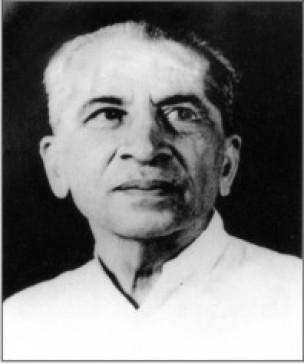M.K. Patel

| Name | M.K. Patel |
| Designation | President |
| Complete postal Address with city code | Indian Phytopathological Society |
| Email IDs | xyz@gmail.com |
| Mobile No. | 123456789 |
Brief Biodata
In the passing away of Dr. Makanji Kalyanji Patel, Professor and Head of the Department of Microbiology, B. P. Baria Science Institute, Navsari, plant pathologists of India have lost a devoted scientist, inspiring teacher and a critical worker in the field of Plant Bacteriology. He died suddenly on the evening of 28th February 1967, at Naysari, Gujarat, after returning home from the college work.
Dr. Patel was born at Bardoli, Gujarat in 1899. His boyhood was spent in a small village near Bardoli. On completion of high school education, he proceeded to U. S. A. and worked his way through, by working on the farms and learning in the college. His interest in Agriculture in general and Bacteriology in particular, drew him to the University of Iowa, where he was groomed under Dr. R. E. Buchanan and Dr. I. E. Melhus, and earned the degrees of M. S. in Plant Bacteriology and Ph. D. in Plant Pathology. His work on the crown-gall bacterium was of such high order that even to this day one of the differential media for isolating the pathogen is called 'Patel agar'. During this period he had the opportunity of having Dr. B. N. Uppal and Dr. B. B. Mundkur as his college mates at Iowa, and this enabled him to have long friendship and collaborative work after returning to India.
He began his professional career as Agent in U. S. Department of Agriculture in 1927. After his return from U. S. in 1929, he was appointed as Rice Mycologist at Larkhana. After serving for about two years, he was appointed as Assistant Professor of Mycology at Agricultural college, Poona, where he served for sixteen years. From 1947, he was appointed as the head of the department and State plant pathologist, till his retirement from Government service in 1954. He was one of the founders and a life-member of the Indian Phytopathological Society. He served the Society as its president in 1951
Though he retired from government service, he kept up his interest and intensive research work in plant pathology. He worked as honorary microbiologist at Amul Dairy, Anand and as honorary professor of Plant Pathology at B. A. College of Agriculture, Anand, and later joined as Professor and head of the Microbiology Department of B. P. Baria Science Institute, Naysari, where he initiated research work on several aspects of Plant Pathology, working to the last hour of his life.
Among the honours that came to Dr. Patel were the appointment as member of the plant disease committees of Indian Council of Agricultural Research, Indian Central Oilseeds Committee, Indian Central Tobacco Committee and Indian Central Cotton Committee He was fellow of Iowa Academy of Sciences from 1925, Iowa Agriculture Experimental Station 1925, National Research Council, Washington 1929, Sigma XI 1927, Indian Phytopathological Society 1966.
Dr. Patel was best known for his work on phytopathogenic bacteria and has described more than 50 bacterial diseases from India. He suggested the grouping of all phytopathogenic bacteria under one family Phytobacteriaceae. In recognition of his significant contributions in this field, he was recently invited to represent India at the International Conference on phytopathogenic bacteria in Portugal.
Dr. Patel was author or co-author of more than 140 scientific papers dealing with various plant diseases incited by bacteria and fungi.
His personal character was reflected in his
research work. He gained the respect and admiration and loyalty of his associates
and students. He always offered, without any hesitation, his time, and intellectual
'resources in helping students. His keen sense of honesty and integrity,
attention to details and high standards in scientific work were combined with
clarity of vision to result in attainments of the highest order. His
contributions in the field of Plant Bacteriology would stand as lasting
monument to his life and work. He is survived by his wife, two sons and a
daughter.